#holy shit higher quality???
Text

First FireAlpaca comic!!!! Do yall like this slop comic style more???
#the amazing digital circus#tdac#tadc fanart#tadc comic#tadc caine#tadc kinger#tadc#kinger x caine#royalteeth#kingleader#caine x kinger#holy shit higher quality???#slop comic#Kinger honkies reveal#who said that????
495 notes
·
View notes
Text

#yeah I cropped it. I wouldn't have done that if Loran had been included :P#wouldn't do that for fanart either but I'm much less concerned about the sanctity of official art.#G Gundam#Domon Kasshu#Gundam#holy shit official anniversary promo art#I wish it were higher image quality though#look at him he has compression
53 notes
·
View notes
Text
your eyes and your limbs / are instruments to pick apart / the distance within
how the FUCK did he manage to write and execute that slick ass instruments-distance slant rhyme IN THE MIDDLE OF BOTH OF THE FUCKING LINES!!!!!! FUCK YOUUUUUUUUU VESSEL WHAT THE FUCKKKK!!!!!!!!
Vessel I want to eat you I wish to consume you and absorb even just an ounce of your creative process just one bite please holy shit I am positively frothing at the fucking maw for you FUCK
#i really need to hear telomeres with higher quality headphones holy shit i understand the hype i totally get it#when this term is over im saving up for better headphones and dedicating a day to just actively listening to the trilogy#they just blow my mind the deeper i wade into their metaphorical waters#the ocean symbolism is catching up to me FUCK#sleep token#sleep token vessel#sleep token lyrics#elkk.txt
20 notes
·
View notes
Text


Goddddd, Dorothy is waifu for laifu, I s2g. Can't wait to see what conditional saviour bullshit she pulls from this stunt.
#not starting the next chapter yet ive been playing too long already today#but damn i was so excited as soon as i saw the light beam like THATS MY WAIFU HELL YEAH#god i fucking love her so much this just overshadowed the current game event for me lmao#nikke#dorothy nikke#nikke goddess of victory#goddess of victory: nikke#goddess of victory nikke#nikke spoilers#i guess idk chapter 22 or 23 (idr) has been out for a while im just slow on playing the main story#i love my ice queen so much holy shit#i keep forgetting what her main outfit looks like bc i have the pink tea time skin equipped. theyre both so pretty ughhh#i want to use the main skin but im a ho for the pink skin cutscene and victory screen like ughhh the despair is so good#i need to replay over zone but ill cry and im not ready to cry about that again yet its too soon lol#i already played it like 4 times when the event was on#Cori.exe#Image.exe#brb tho making her my new phone bg lmao sorry v cyberpunk my waifu needs the spotlight rn#wish i had a higher quality screenshot i gotta go look for one
6 notes
·
View notes
Photo

Nick Nelson
#it's my first try#it's not perfect but I think I like it#wish I knew how to get higher quality screencaps cuz holy shit#nick nelson#nick nelson aesthetic#nick nelson moodboard#heartstopper#heartstopperedit#nellie nelson#bi pride#another version is coming up in a sec bc I couldn't decide...#I guess the notes will decide the winner#mine#myedit#i guess don't steal but I don't think it's good enough to
32 notes
·
View notes
Note
do u like bugs? do u have a fvorite?

"I'm a bit afraid of them, actually!"
3 notes
·
View notes
Text
Two wolves inside of me fighting for dominance to see if I should do renders of the MWII ops
#cambles#their shit is so much higher quality than MW19 and it kinda sucks sjchdjngjfn#cause krueger is always gonna be my baby boy#but holy shit texturing them SUCKS SO MUCH BALLS
4 notes
·
View notes
Text

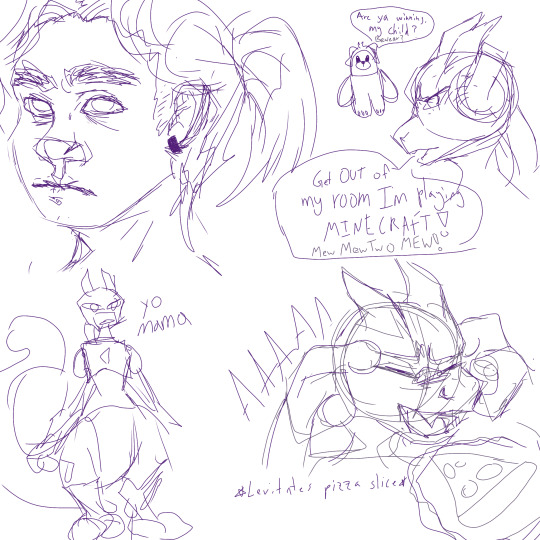
Sketches that get progressively more cringe lol
#my art#mewtwo#pokemon#breaking news: local bewear adopts another lost child#charley's sketch#man mewtwo so cool#self insert#holy shit tumble decimated the quality on these sketches#click for higher qualiter and less eyesore
4 notes
·
View notes
Text
$300+ ANC over-ear headphones can't be that much better than under $200 ones... can they?
#i have sony wh-ch710n only because they were accidentally marked down about 90% lmao#but they malfunctioned for a few hours and i was almost ready to spend the like $300+ for some wh-1000xm4 or bose qc 45 or bose 700#and damn the consequences of spending that disgusting amount#i thought i only had a minor problem with sounds until i got these#now i literally have them on almost all day every day whether I'm listening to something or not#and they've made a huge impact on my quality of life (more bearable anxiety levels and it's easier to focus etc)#but holy shit that is a LOT of money and especially for something that isn't a necessity#but my partner thinks it is a necessity for me because of how much they've helped#but damn i can not imagine the difference between the 710N or 720N being so extreme as to justify a $200 higher price tag
0 notes
Text
Theories of the holy shit what did I just see back there on the street?
Because transmisogyny makes them so impossible to ignore, for at least the last 70 years transfeminized people have served as key material of Anglo-American gender/queer/trans theories, as laundered through anthropology, sexology, and uncited personal witnessing. The anaemic denial of this fact through snappy and surface-level distinctions between ‘queer’ and ‘trans’ and between different transfeminized groups has made it functionally impossible for these theories to seriously account for transf* life, and this failure is highly productive, because it allows for the continued use of both ‘premodern’ ‘third gender’ and ‘postmodern’ transgenderism as lobotomized material for the theories of other people. The last century of gender theoretic development has revolved around slowly refining methods of extracting transfeminized peoples’ insight, forgetting and re-introducing them to their field over and over again to frame them as perpetual novelties, leading to a pernicious form of feminist amnesia that repeats over and over again.
1 . MARGARET MEAD (1949)
The work begins with Margaret Mead, the ‘most famous anthropologist of our century’ (Behar and Gordon 1996), who made her career studying indigenous groups in Samoa and New Guinea, then joined the larger anthropological effort to inform the US Government’s genocidal re-education campaigns against Indigenous American tribes. She later enjoyed a prodigious career as a public intellectual and shifted to more explicitly feminist writing which extensively influenced the movements of the 60s and 70s. Mead argued that essentially all sex-gender roles were culturally determined, and used the specter of the transfeminized homosexual-transvestite both to make that argument and to advocate for gender abolition.
This can be seen most clearly in Mead’s 1949 book Male and Female: a Study of the Sexes in a Changing World. Mead chronologically traces individual gender development through an ethnographic-sexological narrative, beginning with ‘first learnings’ that a child receives primarily through observation. Then the family comes in, and the transvestite comes with it, existing as the primary motive (alongside Freudian sexual attachment) which motivates gendered socialization:
Too great softness, too great passivity, in the male and he will not become a man. The American Plains Indians, valuing courage in battle above all other qualities, watched their little boys with desperate intensity, and drove a fair number of them to give up the struggle and assume women’s dress. (Mead 1949)
Mead argues that “fear that boys will be feminine in behavior may drive many boys into taking refuge in explicit femininity,” but makes a distinction between this identification and what she calls ‘full transvestitism,’ the culturally-specific recognition of that status. This differential leads her to conclude that the physical traits seen as markers of ‘gender inversion’ are culturally specific, and that what is understood as physical sex (then existing on a ‘spectrum’ model) is therefore partially socially determined.
For Mead, gender must be abolished precisely because of the fact that she could even make this argument. As she says,
Only a denial of life itself makes it possible to deny the interdependence of the sexes. Once that interdependence is recognized and traced in minute detail to the infant’s first experience of the contrast between the extra roughness of a shaven cheek and a deeper voice and his mother’s softer skin and higher voice, any programme which claims that the wholeness of one sex can be advanced without considering the other is automatically disallowed.
The desperate need to reproduce these distinctions, to make sex clear and visible and obvious, leads Mead to ultimately argue for a gender abolition that rests on complementary sex-roles. The main benefit of this approach for Mead is the complete eradication of sex-gender ‘confusion’ and its incarnation in transfeminized people, so associated precisely because of their intense usefulness as a tool for undermining sex-gender distinctions. So Mead sees the construction of physical and social gender by using transfeminized people as a lens, but because of her own disgust she can only fix gender by unseeing it again, by displacing gender to ‘real’ physical sex and protecting herself by breaking the tool. This, unsurprisingly, leaves her exactly where she started.
2. BETTY FRIEDAN (1963)
The feminist theorists that came after Mead directly confronted this reversion to ‘complementary sex’ logics, most notably in Betty Friedan’s foundational work The Feminine Mystique. Friedan discusses the ‘paradox’ of Mead’s influence, the strange combination of her exposure of ‘the infinite variety of sexual patterns and the enormous plasticity of human nature’ and her ‘glorification of women in the female role – as defined by their sexual biological function.’ In the middle, Friedan cites a page-long quote describing a point of ambivalent warning in Mead’s writing:
The difference between the two sexes is one of the important conditions upon which we have built the many varieties of human culture that give human beings dignity and stature… Sometimes one quality has been assigned to one sex, sometimes to the other. Now it is boys who are thought of as infinitely vulnerable and in need of special cherishing care, now it is girls… Some people think of women as too weak to work out of doors, others regard women as the appropriate bearers of heavy burdens “because their heads are stronger than men’s” … Some religions, including our European traditional religions, have assigned women an inferior role in the religious hierarchy, others have built their whole symbolic relationship with the supernatural world upon male imitations of the biological functions of women. (emph added by me)
...Are we dealing with a must that we dare not flout because it is rooted so deep in our biological mammalian nature that to flout it means individual and social disease? Or with a must that, although not so deeply rooted, still is so very socially convenient and so well tried that it would be uneconomical to flout it…
...We must also ask: What are the potentialities of sex differences? … If little boys have to meet and assimilate the early shock of knowing that they can never create a baby with the sureness and incontrovertibility that is a woman’s birthright, how does this make them more creatively ambitious, as well as more dependent upon achievement?
Friedan attributes this ultimate focus on sexual difference to Mead’s Freudianism: she argues that Mead’s need to approach culture and personality through sexual difference, combined with her anthropological understanding that ‘there are no true-for-every-culture sexual differences except those involved in the act of procreation’ (Friedan and Quindlen 1963), combines to cause her to inflate the cultural importance of the reproductive role of women. Friedan intensely rebukes this reification of reproduction as another component of the ‘feminine mystique’ (very close to the modern ‘divine feminine’), advocating for programs which enable women to reject the mystique and housewife status and to seek education and employment, to combat the problem ‘which had no name’ but takes shape through spikes in female ‘sex-hunger’ and ‘overt manifestations’ of passive male homosexuality, both understood as ‘children acting out the sexual phantasies of their housewife-mothers.’ In a paradoxical return to Freudianism, Friedan characterizes husbands unwilling to let their wives work as being seduced ‘by the infantile phantasy of having an ever-present mother’ (the Freudian homosexuality-signifier), associating antifeminism with passive homosexuality with femininity which the aspiring feminist has escaped, learning to compete “not as a woman, but as a human being.”
3. THE MULTIPLICATION OF TRANSFEMINIZED SUBJECTS
As we can see, transfeminized subjects are frequently used as signs of system collapse, hypervisible enough to be easy examples and potent enough to rhetorically corrode existing sex-gender systems in preparation for the author’s own vision. Once a piece is published, these examples are usually then forgotten, assumed as scaffolding for the real theory; but the rhetorical strawmen of these transfeminized subjects still remain, trapped implicitly in the text, and they bleed into one another with every new addition to the corpus, every call to action invoking a new transfeminized archetype.
So far we have seen Mead’s anthropological-orientalist framing of ‘transvestitism’ among the anthropological Other and Friedan’s psychological framing of ‘passive homosexuality’ in the United States. The increasing visibility of adult ‘transsexuality,’ somewhat disjoint from the developmental sexology Gill-Peterson (2017) discusses because of its visibility in high-profile cases like Christine Jorgensen, was likewise framed for theory. Harold Garfinkel’s (1967) book Studies in Ethnomethodology, which described methods for observing ‘the objective reality of social facts as an ongoing accomplishment,’ used an intersex woman named Agnes as an avenue to expose how everyday social facts are constructed. Agnes was an ideal exemplar because her insistence on getting HRT and being seen as a woman was considered psychologically normal: “Such insistence was not accompanied by clinically interesting ego defects. These persons contrast in many interesting ways with transvestites, trans-sexualists, and homosexuals.” Of course, Garfinkel was later notified that Agnes did not have an intersex condition, and he then noted that ‘this news turned the article into a feature of the same circumstances it reported, i.e. into a situated report.’
Anyways, now it’s time for yet another transfeminized subject: the ‘transsexually constructed lesbian feminist.’
4. JANICE RAYMOND (1979)
As with her predecessors, Raymond sees analytical power in her particular transfeminized group, arguing that “transsexualism goes to the question of what gender is, how to challenge it, and what reinforces gender stereotypes in a role-defined society.” But she also has some concerns for ‘transsexual women,’ initially assumed heterosexual, none of which are particularly novel or interesting. Now that she’s writing in an environment dominated by Friedan’s mandate towards shedding femininity, feminist amnesia makes it novel to regurgitate Margaret Mead’s responses: that “male transsexualism may well be a graphic expression of the destruction that sex-role molding has wrought on men,” and that “men recognize the power that women have by virtue of female biology and the fact that this power, symbolized in giving birth, is not only procreative but multidimensionally creative” (Raymond 1979).
Her analysis of (new archetype) ‘transsexually-constructed lesbian feminism’ is much more interesting. While Raymond can understand heterosexual transsexual women as ‘reinforcing gender stereotyping’ by pulling primarily from medical archives already hegemonized by gatekeeping and passing requirements, the transsexual women in the lesbian-feminist movement achieved a certain degree of personal contact and visibility that undermined ‘hegemonizing’ logics. So Raymond uses three main arguments: an essentialist appeal to fundamental ‘maleness,’ a red-scare-esque appeal to transsexual lesbian feminists as ‘court eunuchs’ bent on monitoring and controlling feminist spaces, and finally, an argument that transsexual lesbian feminists are fundamentally epistemically corrosive to lesbian feminist spaces:
Whereas the lesbian-feminist crosses the boundary of her patriarchally imposed sex role, the transsexually constructed lesbian-feminist is a boundary violator. This violation is also profoundly mythic, for as Norman O. Brown writes of Dionysus, he as the ‘‘mad god who breaks down boundaries.’’
Contrary to contemporary transmisogynistic discourse which frames trans lesbians as personal threats to women in lesbian-feminist spaces, this violation takes its form not in any particular act but in the act of passing, the deconstructive question this existence seemingly automatically places on lesbian-feminist spaces:
One of the most constraining questions that transsexuals, and, in particular, transsexually constructed lesbian-feminists, pose is the question of self-definition—who is a woman, who is a lesbian-feminist? But, of course, they pose the question on their terms, and we are faced with answering it.
Raymond notes with some frustration that this transsexual question has been discussed ‘out of proportion to their actual numbers,’ using up valuable feminist energy, and frames this as a symptom and crime of transsexual lesbianism itself. The trans question is transsexual women; like the theorists before her, she sees transfeminized people as a gaping hole in the gendered world, but now they’re inside her house, feeding “off woman’s true energy source, i.e., her woman-identified self,” and inherently stand to break “the boundaries of what constitutes femaleness,” to dissolve lesbian-feminism itself.
I want to stress two main points in all of this. First, Raymond understands studying transsexualism as a crucial tool for answering ‘the question of what gender is’ and ‘how to challenge it.’ Second, Raymond’s anxiety about transsexual lesbian-feminists moves away from specific actions and towards the ‘penetration’ inherent in their existence in these spaces at all, the understanding that transsexual women are inherently corrosive to lesbian-feminist movements. These two points are clearly linked. Raymond understands transsexuality as a form of epistemic gender acid, something that can be useful at arm’s length but is deadly up close. Of course, the transfeminized people she discusses were not necessarily invested in asking the Trans Question themselves; trans women attended lesbian-feminist events like Michfest before and after their trans exclusion policies, and regardless of ‘passing’ many people enjoyed a form of don’t ask don’t tell (Tagonist 1997). But within these spaces, the Trans* Question long predated the actual existence of transfeminized people – so once they arrived, the Question and person were fundamentally linked. Trans theorists have negotiated this association extensively, but that’s not the topic of this essay, so I’ll leave you with some sources (Stryker 1994; Stone 1992) and move to Butler.
5. JUDITH BUTLER (1990)
This work has been done already by Vivian Namaste (2020), who argues that “contemporary discussions of Anglo-American feminist theory, exemplified in Butler’s work, begin with the Transgender Question as a way to narrow our focus to the constitution, reproduction, and resignification of gender.” This singular focus on the ‘Transgender Question’ has made it functionally impossible for Anglo-American feminist theory to consider the outsized role of work, particularly sex work, in motivating the discrimination and violence against transfeminized people of color: “framing violence against transsexual prostitutes as ‘gender violence’ is a radical recuperation of these events and their causal nature-a violence at the level of epistemology itself.”
Namaste attributes this focus on featureless ‘gender violence’ to a crippling lack of empiricism, a lack of researcher-subject equity, and an exclusion of subject knowledges. She provides an effective power-based solution to this epistemic violence – that feminist theorists should talk with the subjects of their theory and give them some measure of power in the transaction – a sort of endpoint analysis which means she doesn’t need to consider too much of the internals of the system she’s challenging. That’s a good idea for her work, but with the benefit of history we can move differently. The next section synthesizes Butler, Friedan, Mead, and Raymond together to provide a functionalist analysis of the feminist theoretic use of transfeminized people. What are the benefits of using transfeminized people as an epistemic tool in feminist theory? What are the dangers of using this epistemic tool, and how does feminist theory manage those dangers?
6. PATTERNS OF EXTRACTION AND DEFENSE
Looking past Butler and further into the past reveals that transfeminized people have been crucial not just to the feminist theory of the past 20 years, but have served as exemplars as far back as the 1940s. The ‘Trans* Question,’ which frames transfeminized people as the most visible signifier and most horrifying symptom of social gender, has been cyclically used in a form of feminist cultural amnesia:
A transfeminized group serves as a hypervisible example to 'deconstruct' social gender
Transfeminized deconstruction bloats beyond itself, undermining 'sex traits' or 'femaleness' or some other foundational category of feminist analysis.
Reconstruction of gender as 'biological sex,' alliance between feminist theorists and men of all stripes by arguing that post-gender eradication of transfeminized people will (a) allow men to be feminine without becoming women or (b) destroy femininity entirely.
New-generation feminist theorists realize their predecessors have reinvented social gender. Return to (1).
As Margaret Mead’s work shows, the use of transfeminized groups to deconstruct both physical and social gender has been observed regardless of transmedicalization. This helical pattern has a few general properties:
Each cycle introduces a distinct transfeminized group, positioning it against prior groups as uniquely suitable for analysis, but simultaneously blurs the new group into the existing melange.
This "Trans* Queston" is almost entirely devoid of group-specific context and rooted in transmisogyny, which positions them as horrifying and visible symptoms of social gender.
Each "Trans* Question" initially exposes social gender, but constantly threatens to dissolve other categories or even the theorist's own writing as socially constructed, against the theorist's will.
Each new cycle demonstrates near-complete historical amnesia as to the relevance of transfeminized people in the prior theoretical move.
So the “Trans* Question” allows for the basic feminist move, asserting that gender is socially constructed, but if improperly controlled it stands to dissolve virtually any definition feminist theorists try to build. To be clear, I do not believe in the total deconstruction of categories – you need definitions, even ones you acknowledge as imprecise, to say anything at all. But transfeminized people probably have pretty solid ideas about gender, having to, you know, live with it. The alienated ‘Trans Question*’ has none of this insight, appearing instead as a gaping epistemic hole in the world, and so feminist theorists are forced to come up with complicated quarantining measures to keep the Question from spilling over.
What jeopardizes feminist theory’s use of the Question? One answer (among many) comes by looking at Mead, who concluded that physical characteristics seen as ‘sex traits’ were socially constructed by looking at the culture-specific construction of what she called ‘full transvestitism.’ In this case, the Question undermined sex when the social position of transfeminized subjects were seen as simultaneously normative and anti-normative, existing in some normative ‘social’ role while being understood as distinct from non-transfeminized subjects via another ‘natural’ axis. The fact that these splits were made differently across different transfeminized groups undermined the distinction between social and ‘natural/biological’ aspects of gender, and because the alienated Question provides no means of making anything solid out of any of this, Mead retreated to the womb.
So understanding that the Question allows for the deconstruction of gender, and that it overgrows when multiple (studied as) semi-normative transfeminized groups are cross-compared with one another, we can consider aspects of contemporary feministqueertrans theory that enforce the epistemic isolation and normativization/antinormativization of transfeminized groups. The knots this ties in feminist theories seem relevant both to the ‘why does trans theory exist’ question posed by Chu & Drager (2019) and to the challenges and limitations of applying queer/trans theory to groups outside the anglosphere (Chiang 2021, Savci 2021). I’ll discuss that more in another essay.
SOURCES
Behar, Ruth, and Deborah A. Gordon. 1996. Women Writing Culture. First Edition. Berkeley: University of California Press.
Chiang, Howard. 2021. Transtopia in the Sinophone Pacific. Columbia University Press.
Chu, Andrea Long, and Emmett Harsin Drager. 2019. “After Trans Studies.” TSQ: Transgender Studies Quarterly 6 (1): 103–16. https://doi.org/10.1215/23289252-7253524.
Friedan, Betty, and Anna Quindlen. 1963. The Feminine Mystique. Reprint edition. New York: W. W. Norton & Company.
Garfinkel, Harold. 1967. Studies in Ethnomethodology. 1st edition. Cambridge Oxford Malden,MA: Polity.
Gill-Peterson, Jules. 2017. “Implanting Plasticity into Sex and Trans/Gender.” Angelaki 22 (2): 47–60. https://doi.org/10.1080/0969725X.2017.1322818.
Mead, Margaret. 1949. Male and Female: A Study of the Sexes in a Changing World. First Edition. William Morrow.
Namaste, Viviane. 2020. “Undoing Theory: The ‘Transgender Question’ and the Epistemic Violence of Anglo-American Feminist Theory.” In Feminist Theory Reader, edited by Carole McCann, Seung-kyung Kim, and Emek Ergun, 5th edition. New York, NY London: Routledge.
Raymond, Janice G. 1979. The Transsexual Empire: The Making of the She-Male. New York: Teachers College Press.
Savci, Evren. 2021. Queer in Translation: Sexual Politics Under Neoliberal Islam. Durham (N.C.): Duke University Press Books.
Stone, Sandy. 1992. “The Empire Strikes Back: A Posttranssexual Manifesto.” Camera Obscura: Feminism, Culture, and Media Studies 10 (2 (29)): 150–76. https://doi.org/10.1215/02705346-10-2_29-150.
Stryker, Susan. 1994. “My Words to Victor Frankenstein Above the Village of Chamounix: Performing Transgender Rage.” GLQ: A Journal of Lesbian and Gay Studies 1 (3): 237–54. https://doi.org/10.1215/10642684-1-3-237.
Tagonist, Anne. 1997. “Sister Subverter Diary August ’97.” Unapologetic: The Journal of Irresponsible Gender.
192 notes
·
View notes
Text
Hey man what the fuck.
I don't like how every single episode of FHJY has just upped the ante. I have loved every single season of Fantasy High, and hands down the Intrepid Heroes seasons' are my absolute favorite. But it genuinely feels like every new release, the team behind D20 just escalates further and further. It isn't just higher level gameplay; it's the sheer creativity behind the mechanics implemented and how the story weaves from one episode to another.
Every single player on this table throws themselves into every character they have ever made in previous seasons, but it is the intimiate familiarity with the Bad Kids that raises the stakes. Raises the plot. Raises the tension.
Holy fucking shit, every combat episode in FHJY so far has left me on the edge of my seat. The use of Downtime is so good because it paces the plot, development and mystery so well.
Every single episode I have been like, "Wow, holy shit that was the best episode ever." I've been forced to say that fourteen times now.
Brennan, Rick, the Art Department, the Music, the Concept and Character Artists—every person involved in FH from cast to crew all have that FUCKING DAWG IN THEM.
And now a MSG live show to boot? The quality of Game Changer becoming increasingly insane?
Every one at Dropout is cooking. These are some gourmet shit, people. Not only are they one of the only ethical streaming services out there, but they got that fine dining ready to go.
#fantasy high#fantasy high junior year#d20 fhjy#d20 fantasy high#d20 spoilers#dimension 20#dropout#fhjy spoilers#dimension 20 fhjy
126 notes
·
View notes
Text
Quantumania... did the critics and I watch the same movie???
I swear, people expect Endgame out of everything these days and it’s getting old. Marvel had the impossible task of finishing an Ant Man trilogy while simultaneously introducing Kang the Conquerer (holy shit that sounds even more difficult when I say it out loud) to general, non-comic fanatic and non-Disney Plus subscribing audiences, and they did about the best they could have done. In my opinion, they did great.
That was the most fun I’ve had in a Marvel movie since No Way Home. I think Wakanda Forever was of a higher quality, but this was something else I needed for my trust to be earned back. I have my faith back in Marvel movie magic. It’s still there, and I couldn’t be more hyped for where Ant Man goes next. :)
(PS: Jonathan Majors is my hero and I now want all the MODOK merch)
#quantumania spoilers#ant man 3 spoilers#ant man and the wasp quantumania#scott lang#ant man#hope van dyne#wasp#janet van dyne#hank pym#cassie lang#stature#kang the conqueror#jonathan majors#modok
630 notes
·
View notes
Text
hi hiiiiiii~
🌸 I'm Chloe!! 🌸
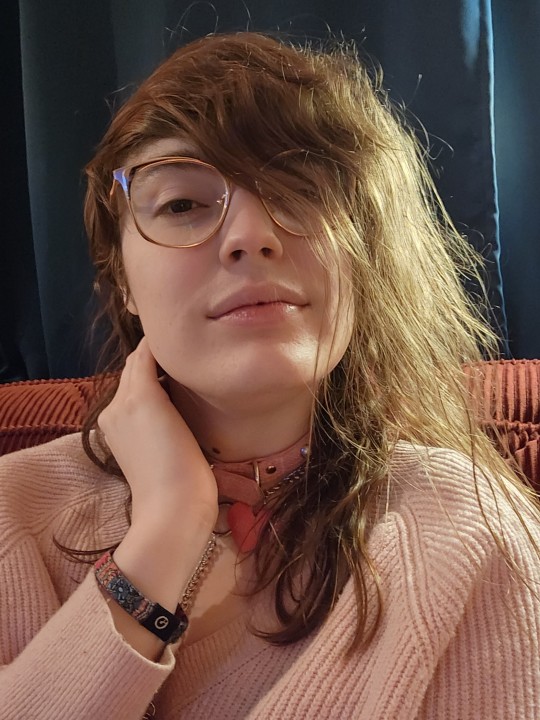
28, she/it, t4t poly transbian puppygirlthing! I'm so gay n transgener,,,,
🏳️⚧️ welcome to my zone. my area. my fuckin. blog or something. whatever. im also on cohost now! same username :333
[ • your "faggot" quality has increased to [1]! who knows what will happen the higher this gets... ]
[ • your chances of encountering a [Chloe] in this location have increased to [100%]! ]
🏳️⚧️ if you can tell me the reference I'm making with the pink bullet point up there I'll kiss you on the mouth. with tongue.
🏳️⚧️ I have,,, so many interests. vibeo games. gunpla. any kinda loud heavy music. the color pink. uhhhh. FUCKIN PINBALL HOLY SHIT. generally being a transgender nuisance.
if you've ever had thoughts of being a girl. want to be a girl. thought girls were real pretty and wished you could be pretty like that. message me. I have some good news for you :)
🏳️⚧️ tags I use:
chloe.txt: text posts, or generally just me talking to no one
chloe.img: photos of me! my face. all of me. if you wanna know what I look like this is where that's at
chloe.mp3: usually whatever music I wanna share or am listening to currently. usually metalcore or deathcore, tho occasionally something else gets stuck in my brain
🏳️⚧️ oh I also make cool shit!! you can find my redbubble link here if you wanna buy any of it, and my Instagram here, tho just a warning, i don't update it often :P
🏳️⚧️ tl;dr: I'm gay and trans and poly and puppy and love pinball n video games. I'm cool I promise 🥺🥺🥺
terfs, chasers, sissy blogs, etc. fuck off entirely.
#brand new pinned hey whats up#probabyl will update it slowly over time#anyways hiiiii interact with me plssssd#chloe.txt#chloe.img#chloe.mp3
267 notes
·
View notes
Text
Oh boy, Hazbin's episode one is finally out.. here are my thoughts on it.
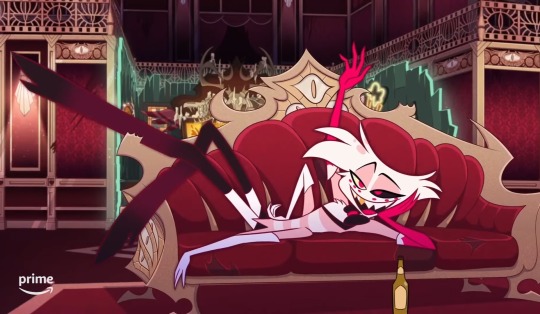
Before I start, I'mma just say, I'm so happy that they actually posted the first episode on YouTube, cuz there's absolutely NO WAY I am paying to watch this shit on Amazon Prime, hell nah. That's good money being wasted on a shit show, no thanks. Anyway, let's move on.
Warning: minor spoilers!
***
Alright so the first episode, all I can say is, it's a rough start. I have SO MANY things to talk about that I feel like this post is going to be extremely long. So bear with me my friends. To make things simple I'll just number everything for y'all cuz I'm such a nice person :)
1) Introduction..
I'mma be real with y'all here, I'm noticing a pattern with Vivziepop's shows in terms of episodes. Like, the thing I don't like about Hazbin Hotel right now is that they do nothing to establish the characters at all!
You have to watch the Pilot (and I guess do some research) to understand the characters a little better, but the thing with Viv is that she claims that the Pilot episode isn't canon, and that "you shouldn't watch it" because it doesn't count.
And yet, she doesn't even bother to introduce the characters in the first episode! So if you're watching this show for the first time, you won't understand what the characters motives are or their personalities. She literally did the same thing with Helluva Boss! And now she's doing it here, and it bothers me so much.
And don't come at me saying "Oh but that's the point of the show, we'll get to know about them later!" Like, the characters talk to each other as if they had already met before, which means that we won't get introduced to them. They're just there in the series with no explanation.
Moving on..
2) The characters..
Oh my god, where do I even begin? The characters are terrible- I absolutely dislike every single one. They completely butchered them all.
I'mma start with Adam because holy shit he's the worst one of all, he literally serves no purpose in the show, other than to talk about himself and stroke his massive ego in front of Charlie. Not only this but his character design is so stupid- nothing about him screams "I'm an angel, I'm supposed to be the good guy here!".
Alastor just sucks. He's such an asshole in this series and he doesn't care about anyone at all. Like, I get that he was kind of sadistic in the Pilot I guess, but that's because he was meant to be intimidating and someone not to be messed with. But here he's just a super powerful guy who really likes old timey shit, and he's a dick to everyone for no reason.
Angel Dust all he does is be horny 24/7 which really isn't a good personality trait. I mean, he's a porn star, I get it, but he doesn't have to be spewing sex jokes all the damn time, it's annoying.
Vaggie is boring as hell, and honestly it doesn't even feel like she's dating Charlie, she feels more like a weirdly overprotective older sister if anything- plus their relationship feels forced in.
Nifty has been reduced to a weird yandere type character and honestly it's super lame. She deserves better.
*Edit: Vaggie also has no redeeming qualities, or a personality at all. She's literally just Charlie's girlfriend, that's it. There's nothing else about her. She doesn't have a single purpose other than to be Charlie's girlfriend.
Next up..
3) The voices..
Oh boy, some of the voices are not that great to be honest. I still don't like Alastor's voice, he sounds like if Shrek had a congestion and tried speaking with a higher pitch. Angel Dust's voice is TERRIBLE, it's so irritating to listen to- like, you can tell the voice actor is really forcing himself to sound like the Pilot VA. But it doesn't come naturally to him! Angel Dust's voice cracks so many times and it sounds so annoying.
This one is just a personal opinion but I really don't like Husk's voice. Like, I kinda miss his old voice because he actually sounded like a drunk old man, but here he just has your typical black guy who works at a casino kind of voice. (Literally, if King Dice from Cuphead had a deeper voice). Like, the voice is good, don't get me wrong, Keith David is an amazing voice actor, it's just that his voice doesn't suit Husk in my opinion.
Oh, and don't get started on Brandon Rodgers voicing Katie Killjoy- I swear to god I just wanna rip my ears off. I hate Brandon, okay? No offense but the guy's voice is annoying, he's not funny at all- I am so disappointed that they cast him to voice Katie, she deserves so much better!
Charlie's voice is alright, I mean she sounds like your typical quirky Disney princess. Vaggie sounds incredibly monotonous and Nifty sounds off, it almost sounds like the VA is using a microphone with a different quality than everyone else.
Furthermore..
4) The songs..
So there're two songs in this episode, and yeah they're boring. Basically, both songs are kinda like a rip-off of "Inside of every demon is a rainbow" from the Pilot, as they are both fast paced and explain Charlie's motive with the whole Hotel stuff.
But here the songs are divided in two, the first being "Happy day in hell". Which we've already seen countless of times in the trailers and whatnot. The song is a super Disney musical type of shit, which is alright I guess. But the second one "Hell is forever" sung by Adam is so unmemorable and boring. Yeah I personally didn't like these songs at all. I even ended up skipping through them when I watched the episode. That's how you know how bad they are.
And finally..
5) The comedy...
This show isn't funny guys. Viv's comedy isn't good and she genuinely doesn't know how to be funny. The only time I actually found a part of the episode funny was the scene where Vaggie was holding the camera while trying to make a commercial for the Hotel, and she asked Nifty to say some lines but all she did was just stand there blankly staring at the camera and not saying anything. That actually got a short chuckle outta me, but aside from that? Nothing else in the show is even remotely funny.
Alright that's it, that's all I have to say about the first episode. I'm done with this opinion post- If the other episodes get posted or leaked, I'll definitely watch them and give my opinion on them. Thank you all for reading and I'll see you next time!
#vivziepop critical#vivziepop criticism#vivziepop critique#anti vivziepop#hazbin hotel criticism#hazbin hotel critique#hazbin hotel critical#spindlehorse criticism#spindlehorse critical#///#by neko loogi#do not repost#neko loogi rambles 😬#neko loogi rants😔
66 notes
·
View notes
Text
“Poison” Deep Analysis
(Aka I had too much free time in study hall)
***Some of the questions are unanswered!!!***
Starting with the skulls:

This is one of the questions I have to leave unanswered! I can’t figure out if the skulls are just an omen of death and evil and stuff or if they have a deeper meaning in their design. One thing though I am sure of is any time in this video is when red skulls are used, it’s Valentino. Most red in the video is Valentino overall. (I’m also really liking the bisexual lighting lmao)
Right after the red skulls are used, there are skulls with an “Angel Dust” color palette. I have yet to figure out if these skulls truly represent Angel, but they are definitely used after the red ones to show that Valentino has authority over Angel Dust, which is why the red skulls are shown first.
Next, use of chains:
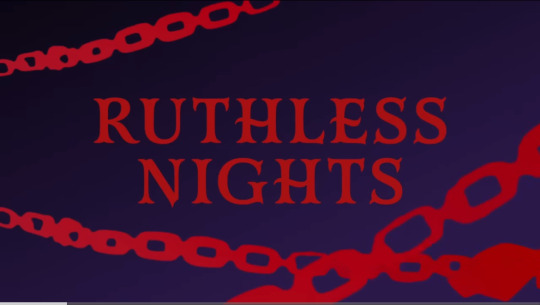
The chains are red, which agains means Valentino and the chains represent his control over Angel.
Glasses:
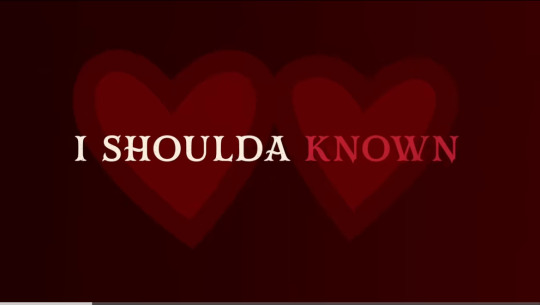
I can’t believe it took me so long to notice these!! Obviously Valentino being a dickhead.
Dancers:
The dancers here look exactly like the ones in the gifs released this year, so they are probably related.
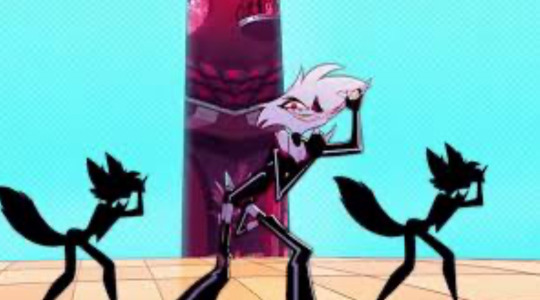
(Sorry I couldn’t find a higher quality image)
And the ones in Poison:
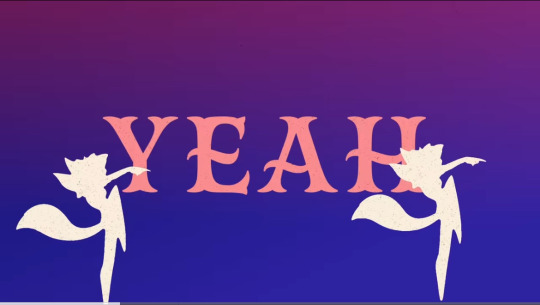
I think this means the gif scene and this song are together, unless the dancers are shown in multiple scenes. (Return of the bisexual lighting!!)
The smoke:
The red streaks throughout are Valentino’s smoke, and are even further reinforcing the fact that Valentino has power over Angel.
How “Poison” is depicted:
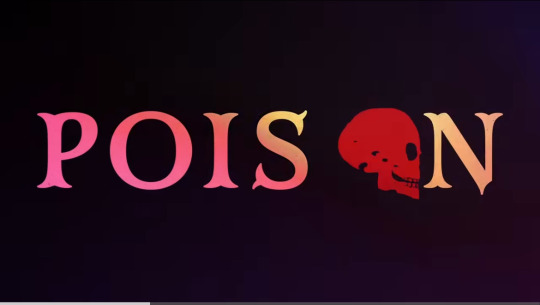
Possibly one of my favorite points. The letters have another Angel Dust pallet to them, but the second “o” IS THE RED SKULL. This initially made me start this analysis. More of the “Val has power over Angel” motif.
“Every night I’m livin’ like there’s no tomorrow”
This lyric is really powerful along with the ones before it. Not only is Angel trapped, he feels it. This lyric is also very important because it changes later, to “Every night I’m wasted like there’s no tomorrow”, and that’s the first in this song (apart from the smoke) that says that Valentino is drugging Angel.
Angel streaks (??):
A lyric ends with pink streaks over the word that mimics Val’s smoke, but their pink color leaves me to believe that it represents Angel’s free will.

ALSO:
Going along with this, RIGHT after on the next word, Angel’s pink streaks are replaced with Val’s red smoke.
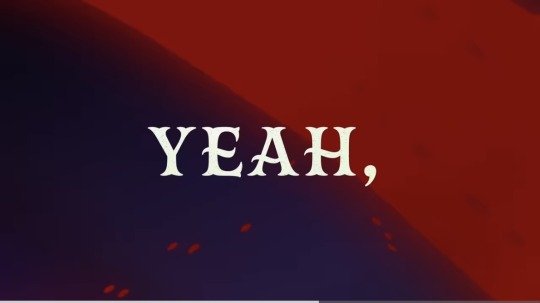
“Drownin’ in poison”:
At this point, Val’s smoke takes on a watery look. Once again showing the authority of Val over Angel and I’ve said that so many times and blah blah blah. But I think the style of it is really cool
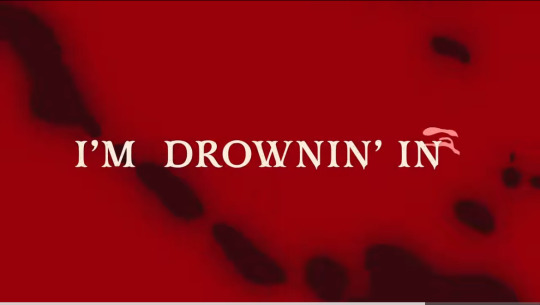
“I’m fillin’ up my glass, but it’s always hollow”:
I really like the word choice here. But WHY DID THEY CHOOSE IT?? If it’s meant to be a “glass half full/half empty” thing, I’m assuming it’s Angel saying that his life is hollow and empty. In between this lyric and “full of poison”, the background turns from pink and on “full of poison” changes to red.
“I’m sick of the poison”:
During “I’m sick”, the screen is pink. On “of the poison” it turns red. Also Angel is expressing how he no longer wants to work for Valentino, but
“What’s the worst part of this hell? I can only blame myself”
I don’t think this lyric from earlier in the song is Angel expressing self-pity, but he may feel like he deserves the treatment he gets. That, or he was drugged or truly believed it was a good decision when he signed his contract with Valentino.
Last frame:
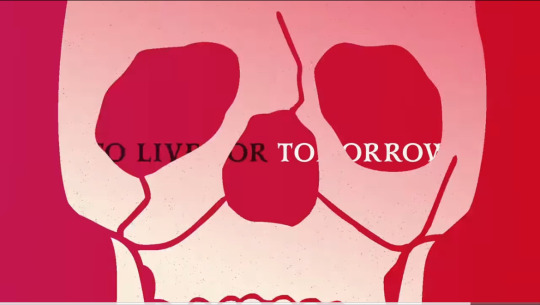
I had to remove one of the images I was going to use above so I could get the point across here because holy shit. As much as I want to be positive and say that Angel will get out of his contract nice n’ easy, I really don’t think that’s going to happen. I think that there will be at least a really bad fight between Angel and Valentino, if in season one Angel is released from the contract at all. Another scenario could be that Angel only gets out if Val gets exterminated or a being with high power (someone with power like Charlie or Lucifer or even a very high-ranking Overlord) forces the contract to be broken and Angel to be free.
Also: notice how “tomorrow” is in white while the rest of the lyric is in black. It’s either Angel’s final shred of hope or he has truly given up all hope. The skull reinforces my point above of this not going well for Angel.
————————————————————————
Please comment/send asks if you have your own ideas!!
I think Blake Roman’s voice for Angel is amazing!! I especially like that it is a bit more masculine idk why :) but like holy fuck!! I love this song so much it’s right up there next to Addict
(End- the rest of this is just notes)
Also: there are so many points that if I missed a few I’m sorry lol! It’s so easy to do an analysis on this and I might do one again on other songs when the show comes out.
Also also: I know some of the lyrics and some of my points have other darker/more sexual meanings, but I don’t have the time or mental capacity to unpack that lmao
#hazbin hotel poison#hazbin hotel#angel dust#this took me forever#I love it so much tho#hazbin valentino#hazbin charlie#hazbin lucifer#hellaverse
56 notes
·
View notes
Text
going on a deepdive into 3DS/DS purikura games
I saw this image on a tumblr post and I wanted to look for the original source (so I could properly credit the person and to find out what game it was):

I couldn't find the original, however, I did find this yahoo ask asking what game it was.


The person answering seemed to think it was a hello kitty game, likely because of the hello kitty sticker used to cover the face of the person taking the selfie, but it's clearly one that was added after the photo of the DS was taken, it's not a sticker that exists within that software.
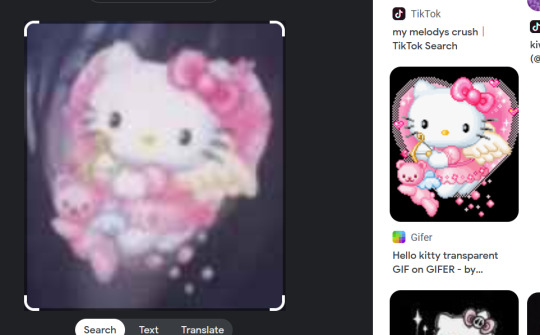
As you can see here, it seems to be a piece of hello kitty fanart- it's not official art, and therefore not featured in the game. This helps with my search a bit.
Also, I believe this is a 3DS title, not a DSI/DS one like the person above suggested- the "select" button in the home menu is the same as the o3DSXL's. This suggests this game was published BEFORE the n3DS series was released.
I remembered playing a game in the past called "Sanrio Picross" that had some purikura elements, however, that game doesn't allow you to edit photographs, and upon looking at them side by side, the UI is completely different.


I googled "3DS purikura game" (purikura being the Japanese word for photo booth) and the only result was "Sparkle Snapshots." From what I could see, the 3DS title didn't have UI that matched either. I decided to look up the DSI game as a last ditch effort into this line of thinking and I didn't find anything.
I did find a screenshot of the title screen on khinsider VGM and the title song goes HARD.
It doesn't seem like this is a purikura game, (or at least not solely), so my research must continue. The next thing I looked into was the UI. I know some Japanese, not very much, but enough to read some basic katakana.

Under the X button it says "Zoom." The L button seems to say "Erase Button."

And it seems that R and A also say "Erase Button." Start obviously says "Menu" It seems like this is a very basic game.
For the bottom screen, it was taken at an angle and it contains some Kanji, so I put it through some photo editing to make it easier to read.

Typing that into google translate I got "Saved! Do you continue doodle?" (and then obviously yes/no)
The phrasing of doodle is interesting. This implies it could be an art program, like the yahoo commenter suggested earlier.
Searching up 3DS art programs doesn't really help me, and coloring games doesn't work either...
My last resort is to go through every 3DS game released in japan, (since we already have a copy of every game ever released for the 3DS online...) However, before I do that, I'm going to look for this image some more.
I found it running rampant on pinterest...


No one else seems to know what it is either LOL.
However, the version on pinterest is significantly higher quality!

Next step, finding more games. I simply need to try to find MORE games. Because I know what the UI looks like, it shouldn't be too hard.
I'll run this search again and just scroll till I see a new lead...

Oh, that was quick!
I found a series called "minna no" which seems to be similar to the "imagine" series in the US- just kind of children's shovelware that never got translated to english.
I ran a search for みんなの (Minna no) on google and...


Huh that sounds familiar... oh my god.
OH MY GOD.

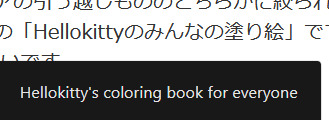
It'S THE SAME FUCKING GAME THE GUY FROM EARLIER WAS TALKING ABOUT. The one I dismissed entirely because it was a DSi title and the game's UI wasn't DSi? It was a 3DS title.
The best part about all of this... the best part about all of this... the UI doesn't even match at all. I went full circle and just accidentally proved this guy completely wrong.
I checked the rest of the minna no games, and yup, no dice. It's some other title.
Next up, I looked at Girls RPG Cinderella Life, mostly because it kept coming up over and over during my research- and holy shit their website is adorable.
Their website is an accessibility nightmare, but it's absolutely adorable. If you are into web design at all, I'd recommend checking it out.

super cute!! looking through the website only proves to me though that this is not the game we are looking for though, so let's move on.
Okay okay okay, how about... JS GIRL: Doki Doki Model Challenge?
Found some information about it.... oh shit there's a camera function?


Dammit... Doesn't look anything like the image.

WAIT WAIT WAIT. A photo decoration option??????

While trying to find more images I found out the game was in this pretty holographic packaging. God I'm jealous. More games should do this.
Either way I can't seem to find any images on this, so it's going on the list of possible candidates. And While looking up this game, I found more under the same artstyle that also might be culprits.
While trying to find more information, I realized how many of these games there are. And also how many of them I have played in the past, lol.
I've been a big fan of Style Savvy (AKA Girls Mode) and I've tried out Girls Fashion Shoot, which was an english translation from a different game series about becoming a model.
youtube
Yet another knocked off the list!
By extension, the second game is also knocked off the list.
youtube
Another model game- this one called Neco*Petit Girls Runway. Another dud, but also very cute.
Pretty Rhythm series seemed to have a camera function but it didn't line up with the UI shown in the screen either.
If anyone has any more ideas or lists of games, please tell me below! I need to take a break from researching this, and I'll need to play some of that JS model game from earlier, since I doubt anyone has used the photo function during a youtube Let's Play, but based on the UI, I sincerely doubt that it's the one we are looking for.
36 notes
·
View notes